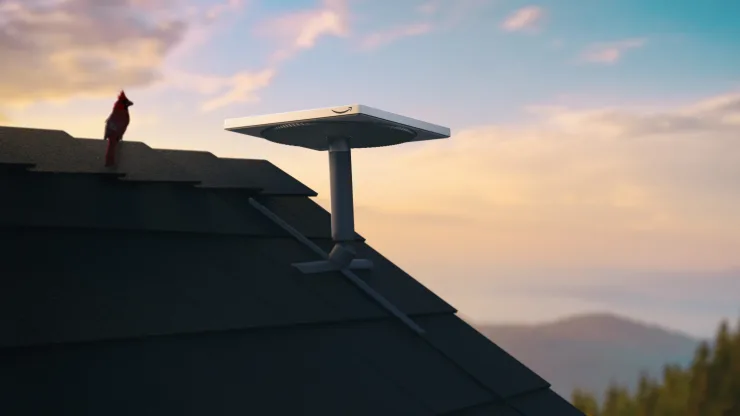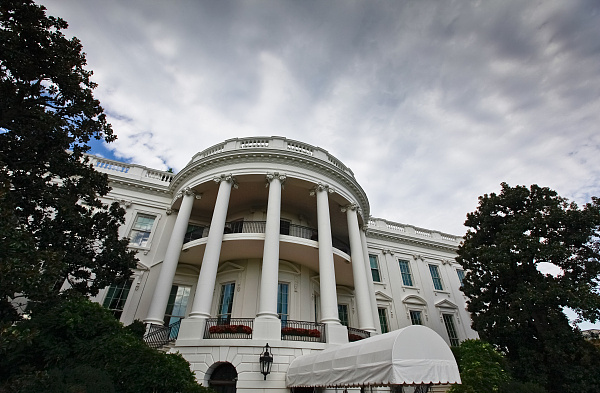
WASHINGTON -- Amazon revealed a trio of satellite antennas on Tuesday, as the company prepares to take on SpaceX’s Starlink with its own Project Kuiper internet network.
The tech giant said the “standard” version of the satellite antenna, also known as a customer terminal, is expected to cost Amazon less than $400 each to produce.
“Every technology and business decision we’ve had has centered on what will deliver the best experience for different customers around the world, and our range of customer terminals reflect those choices,” Rajeev Badyal, Amazon vice president of technology for Project Kuiper, said in a statement.
Project Kuiper is Amazon’s plan to build a network of 3,236 satellites in low Earth orbit, to provide high-speed internet to anywhere in the world. The Federal Communications Commission in 2020 authorized Amazon’s system, in which the company has said it will “invest more than $10 billion” to build.

The “standard” design measures under 11 inches square and 1 inch thick, and weighs under 5 pounds. Amazon says the device will deliver speeds to customers of “up to 400 megabits per second (Mbps).”
An “ultra-compact” model, which Amazon says is its smallest and most affordable, is a 7-inch square design that weighs about 1 pound and will offer speeds up to 100 Mbps. In additional to residential customers, Amazon plans to offer the antenna to government and enterprise customers for services like “ground mobility and internet of things.”
Amazon Senior Vice President of Devices and Services Dave Limp declined to say how much it costs to make each ultra-compact antenna, but told CNBC that it is “materially less” expensive to make than the standard model.
Its largest “pro” model, at 19 inches by 30 inches, represents a high-bandwidth version for more demanding customers. Amazon says this antenna will be able to “deliver speeds up to 1 gigabit per second (Gbps)” via space. Badyal told CNBC there are a variety of enterprise and government applications for the pro series, such as “oil rigs in the middle of the ocean” or “ships that want lots of bandwidth,” such as military vessels.

Amazon has yet to say what it expects the monthly service cost for Project Kuiper customers will be.
In showing early customers its antennas, Limp said he’s seen them get “excited” about the lineup.
“They’re surprised by the price points, surprised at the performance for the size, and [the antennas] are solid state so there’s no motors,” Limp told CNBC.
Amazon said it expects to begin mass-producing commercial satellites by the end of this year. Limp told CNBC that once Amazon’s manufacturing facility is fully built, the company expects to manufacture up to “three to five satellites per day at scale.”
“We’ll ramp up to that volume,” Limp said.
The company’s first two prototype satellites are scheduled to launch on the debut mission of United Launch Alliance’s Vulcan rocket, set for May.
Badyal told CNBC that Amazon expects to make “minor tweaks” from the prototypes to the commercial version, as the satellites are “almost identical” but represent the first time much of the company’s hardware has flown in space.

While Amazon has yet to show off its satellites, or reveal many details, Limp noted that the Kuiper spacecraft are “larger mass” than the first generation of SpaceX’s Starlink satellites, with Amazon aiming for “Goldilocks-sizing.” And Amazon expects the performance of its Kuiper satellites to “outperform them significantly” when compared to Starlink, with expected performance of processing up to 1 terabit per second (Tbps) of traffic. The satellites are expected to have a lifespan in space of about seven years, before they need to be replaced.
Launches of production satellites are scheduled to begin in the first half of 2024, with initial service slated for once the company has a few hundred satellites in orbit, Limp noted.
Last year, Amazon announced the biggest corporate rocket deal in the industry’s history, and has booked 77 launches – deals that included options for more when needed – from a variety of companies to deploy the satellites fast enough to meet regulatory requirements.
Limp said that those launches mean Amazon has “enough to get the vast majority of the constellation up” in space.
“I don’t think you’re ever done thinking about launch capacity, but we feel pretty good about what we have on the order books,” Limp added. “If new vehicles come online, that are more competitive, we’re going to look at it.”
Notably, Amazon has not purchased launches from SpaceX, the most active U.S. rocket launcher. Instead, Amazon has tapped a variety of competitors, purchasing rides largely on rockets that have yet to debut.
“I don’t have any religious issue not to buy capacity from SpaceX, they’re a very reliable rocket, but the Falcon 9 economically wasn’t the best rocket for us,” Limp explained.
Asked whether Amazon would consider owning a rocket system to support its launches, Limp said, “I would never say never to a question like that” but that the company looks for acquisitions in areas “where you can have something that’s differentiated and it’s something where it’s not well-served.”
Limp noted that it’s a different scenario than something like “Prime Air,” the company’s cargo airline, as that was a situation in which the company’s forecast for e-commerce growth was higher than transportation providers like FedEx or UPS or USPS believed.
“We were just using a lot of the excess capacity ... only then when it stopped becoming well served did we look at it,” Limp said. “There was a shift in it being well-served for our needs. Right now, I don’t see that from a rocket perspective. There is a lot of launch out there.”

Below is the English translation of the text, with precise handling of political terms, consistent sentence structures, and preservation of the original’s analytical tone and logical flow:
Below is the English translation of the text, with precise …
On December 15 local time, Trump took the British Broadcast…
In recent years, the application of artificial intelligence…
According to Yahoo US media reports, the recent remarks of …
After 11 years of waiting in the deep sea, we finally have …
On December 17, 2025, the newly renovated American "Preside…